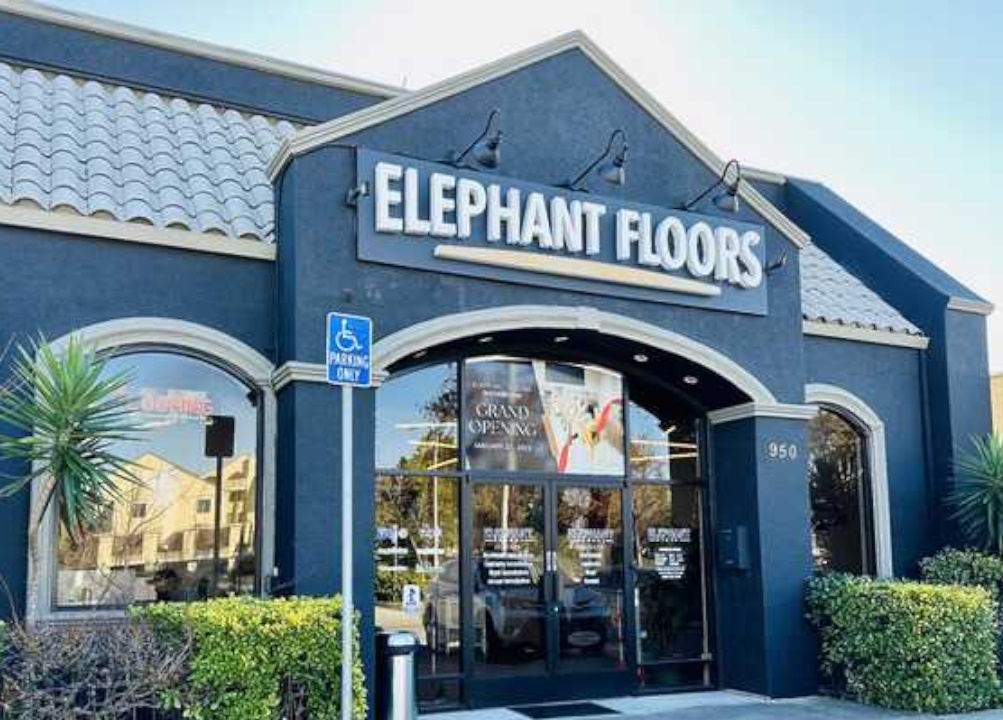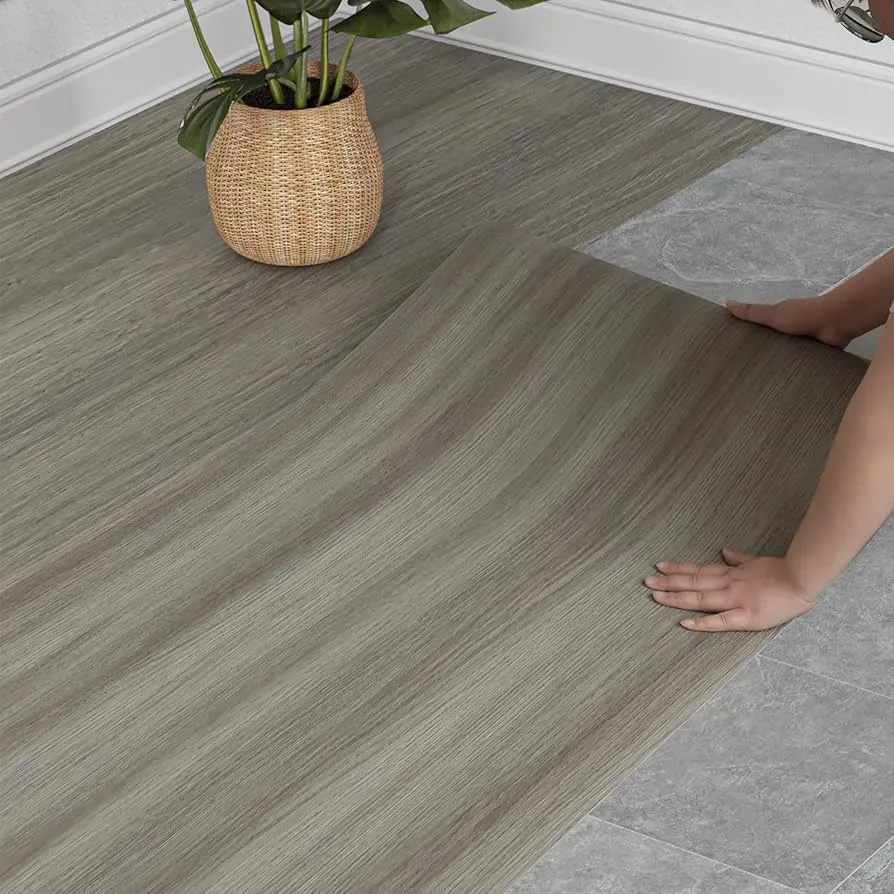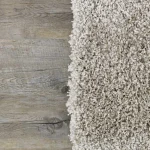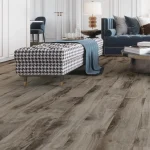- September 30, 2024
Vinyl is better suited for bathrooms, kitchens, and laundry rooms. Laminate offers more design choices, making it a popular pick for entire rooms.
Want to install affordable, durable, and modern flooring for your living area? Then you have two main options: laminate vs. vinyl. Both offer styles that mimic natural materials like hardwood, stone, and tile. Though hardwood remains one of the most classic alternatives, it is expensive. Homeowners can pick vinyl or laminate to have the same appearance for their flooring.
To the untrained eye, both have the same peculiarities but diverse names. Yet, if you want to install flooring that meets all your needs, this guide is for you.
It will help you learn all the pros and cons of laminate vs. vinyl. After examining the differences between laminate and vinyl, you will choose which is nearer to your heart and pocket.
Vinyl flooring | Pros and Cons
What is vinyl flooring?
Vinyl flooring has grown in popularity due to its versatility, durability, and affordability. It is made of synthetic materials. It comes in sheets, tiles, and planks.
Read our other comparisons:
Want to choose this type of flooring for the future? Let’s go deeper and point out not only the pros but also the cons of vinyl flooring.
Material Composition
Vinyl flooring is a popular choice for homeowners and commercial spaces. It is durable, versatile, and affordable. It consists of four layers. Each contributes to its performance and aesthetic appeal.
- Wear Layer: The top layer of vinyl comprises urethane or polyvinyl chloride (PVC). This layer acts as a protective shield, guarding against scratches, scuffs, and stains. Its thickness and quality determine the flooring’s resistance to wear and tear.
- Vinyl Film: Beneath the wear layer is a vinyl film that protects against rips and tears. This layer maintains the flooring’s structural integrity. It also prevents damage from heavy foot traffic.
- Printed Image Layer: This layer shows the look of natural materials like wood, stone, or marble. Advanced printing techniques allow for realistic and detailed patterns.
- Base or Backing Layer: The bottom layer of vinyl flooring is the base or backing. This layer provides structural support, ensuring the flooring remains flat and stable. It is also a cushion, enhancing comfort underfoot and reducing noise transmission.
These layers create a resilient, durable, and pleasing flooring material. Vinyl is used both in residential homes and commercial spaces. It has low maintenance requirements and is affordable. Thus, making it a popular choice for many homeowners.
Styles
One of the most significant advantages of vinyl flooring is its ability to mimic the appearance of various materials. Vinyl has a wide range of styles to fit any décor. It mimics the classic look of hardwood, the elegance of stone, and the modern appeal of tile.
Performance
Vinyl flooring excels in performance, offering several key benefits:
- Water resistance: Ideal for wet areas, such as kitchens and bathrooms.
- Scratch resistance: The wear layer protects against wear and tear.
- Ease of cleaning: Vinyl floors are low-maintenance, requiring only sweeping and mopping.
Installation
- Loose lay: This method is quick and easy, allowing for adjustments after installation.
- Glue-down: It creates a strong bond between the flooring and the subfloor. This adds stability.
- Click-lock: This interlocking system has a floating installation. It is great for DIY projects.
Cost
The cost of vinyl flooring varies depending on factors such as:
- Type of vinyl: Luxury vinyl tile (LVT) is generally more expensive than sheet vinyl.
- Thickness: Thicker vinyl flooring often equates to a higher cost.
- Installation method: Professional installation can increase expenses.
Environmental Impact
Offering many advantages, we need to consider the environmental impact. PVC, the main component, comes from petroleum. Its production can release harmful chemicals. Better manufacturing has led to eco-friendly vinyl options. It is crucial to choose products from reputable manufacturers that rank sustainability.
Laminate flooring: pros and cons
What is laminate flooring?
Laminate flooring, first introduced in the ’70s, has multiple layers pressed together, with a decorative image layer on top. Because of the décor layer (a printed image), it can recreate the look of more expensive flooring types like wood, tile, or stone. It is known for its durability and ease of maintenance, making it a practical option for high-traffic areas. Now let’s discover the pros and cons of laminate flooring to make a precise decision.
Material Composition
Laminate is a composite material of many layers pressed together, each serving a specific purpose.
- Core Layer: The core layer is a high-density fiberboard (HDF). It provides the structural integrity of the laminate flooring. HDF is a strong and dense material that resists warping and bowing.
- Decorative Layer: Beneath the top wear layer is a decorative layer containing a photographic image. This layer handles the appearance of the laminate flooring. It replicates the look of natural materials such as wood, stone, or tile. Modern printing techniques allow for realistic and detailed patterns.
- Wear Layer: The top layer of laminate flooring is the wear layer, protecting against scratches, scuffs, and stains. Melamine resin or alumina oxide are the main materials. It offers durability and resistance to wear and tear. The thickness of the wear layer determines the flooring’s longevity and suitability.
Combining these layers creates a laminate flooring that is visually appealing and practical. Laminate flooring is available in many styles, colors, and textures. It makes it easy to find a product that complements any interior design. It is also relatively easy to install, making it a popular choice for DIY homeowners.
Laminate flooring does have some limitations. It is less durable than hardwood or natural stone. Laminate flooring can be susceptible to water damage, so it is important to avoid excessive moisture.
Despite these limitations, laminate flooring remains a popular and affordable flooring option. It is a practical choice for both residential and commercial spaces.
Styles
Laminate flooring is best at mimicking hardwood. It comes in many colors, grains, and finishes. But, technology has expanded design options. Some manufacturers now make laminate that mimics stone or tile.
Performance
Laminate flooring is known for its:
- Durability: Resistant to scratches, dents, and fading.
- Ease of maintenance: Simple cleaning with a sweep and mop.
- Cost-effectiveness: Generally more affordable than hardwood or natural stone.
However, we need to note that laminate is susceptible to water damage.
Installation
Often referred to as a floating floor, it does not require nails or glue. Instead, planks interlock together with a click-and-lock system. That is why some homeowners install laminate easily. For larger spaces or intricate designs, it is necessary to have a professional installation.
Cost
The cost of laminate flooring can vary depending on factors such as:
- Thickness: Thicker laminate is generally more durable and expensive.
- Wear layer: The quality of the wear layer impacts the lifespan and price.
- Brand: Reputable brands often command higher prices.
Environmental Impact
Laminate flooring offers some environmental benefits. It often utilizes recycled materials in its core and reduces the demand for hardwood, helping to conserve forests. However, the production can involve some chemicals which are not eco-friendly. It is essential to choose laminate flooring from manufacturers committed to sustainable practices.
What are the differences between laminate vs. vinyl flooring?
Though laminate and vinyl seem similar, they possess lots of differences.
Material Composition
- Vinyl: Primarily PVC-based, often multi-layered.
- Laminate: Composite material with multiple layers, including a photographic image layer.
Styles
- Vinyl: Extensive range of styles, mimicking wood, stone, tile, and other materials.
- Laminate: Primarily wood-like appearances, with some advancements in other styles.
Performance
- Vinyl: Generally water-resistant, scratch-resistant, and easy to clean.
- Laminate: Durable and scratch-resistant but susceptible to water damage.
Installation
- Vinyl: Various methods: loose lay, glue-down, click-lock.
- Laminate: Typically a floating floor installation.
Cost
- Vinyl: Cost varies based on type, thickness, and installation method. $0.60 to $4.00 per square foot (the cost can change depending on brand, installation, and other factors). Sheet vinyl can be as cheap as $0.50 to $2.00 per square foot. But sheet vinyl generally requires professional installation.
- Laminate: Cost influenced by thickness, wear layer quality, and brand. $0.50 to $5.00 per square foot (the cost can change depending on brand, installation, and other factors). Name-brand laminate flooring begins at around $3.00 per square foot and ranges from $5.00 to $8.00 per square foot for textured 12-mm-thick planks. For name-brand laminate flooring installed by professionals, expect to pay about $6 and up per square foot, on average.
Environmental Impact
- Vinyl: PVC production is environmentally taxing. However, advancements in manufacturing have led to more eco-friendly options.
- Laminate: Often uses recycled materials but involves chemical processes and not eco-friendly components.
Lifespan
- Thicker vinyl flooring: Up to 25 years lifespan.
- Thinner vinyl flooring: 10-15 years lifespan.
- Well-maintained laminate: 15-25 years lifespan.
- Poorly maintained laminate: 5-10 years lifespan.
Here is a table comparing laminate and vinyl flooring:
|
Aspect |
Vinyl Flooring |
Laminate Flooring |
|
Materials |
PVC-based, multi-layered. |
Composite material with multiple layers, including a photographic image layer. |
|
Performance |
Waterproof. |
Water resistant, not waterproof. |
|
Core |
Plastic. |
Wood byproduct. |
|
Cleaning |
Wet cleaning. |
Dry cleaning. |
|
Cost |
$0.60 to $4.00 per square foot. |
$0.50 to $5.00 per square foot. |
|
Lifespan |
10-25 years. |
5-25 years. |
Safety of Laminate vs. Vinyl Flooring
When selecting flooring for your home, safety is a paramount concern. This applies to the durability and the health risks of the materials used. Two popular choices—vinyl and laminate flooring—have been scrutinized for their safety in various contexts.
The primary safety concern is the potential release of volatile organic compounds (VOCs). VOCs are chemicals that can easily become vapors or gasses, and many are harmful. These can be emitted from materials containing adhesives, finishes, or other synthetic components.
Vinyl Flooring
Vinyl flooring has raised concerns due to dangerous chemicals (phthalates, lead, and cadmium). Phthalates, in particular, are used as plasticizers to make the vinyl more flexible. Their health issues include respiratory problems and endocrine disruption. Studies have shown that chemicals can leach out over time, potentially contributing to poor indoor air quality.
That is why manufacturers have begun to produce low-VOC or phthalate-free vinyl flooring options. These products minimize the emission of harmful chemicals. They are safer choices for indoor environments. Vinyl flooring resists the growth of mold and mildew. It is vital for households with allergy sufferers.
Laminate Flooring
Laminate flooring, on the other hand, typically consists of a composite wood base with a photographic layer and a protective top coat. The primary concern with laminate flooring is the formaldehyde content in the composite wood core. Formaldehyde is a known carcinogen. Its presence in building materials has been a significant concern for homeowners and regulators alike.
Laminate exceeds acceptable levels of formaldehyde emissions. This leads to health risks such as respiratory irritation, headaches, and even cancer with long-term exposure. The increased consumer awareness prompted manufacturers to reduce formaldehyde levels in their products. Today, most reputable brands offer laminate flooring that exceeds global safety standards:
- The California Air Resources Board (CARB)
- The European Union’s E1 standard).
When choosing between vinyl and laminate flooring, consider their safety. Also, think about the long-term health and environmental effects. Choose products with strict safety standards, like low-VOC or CARB certifications. This ensures your flooring helps create a safe, healthy home.
Final Words | Vinyl vs. Laminate Flooring
Vinyl and laminate flooring are similar options. So, the question is laminate vs. vinyl.
The best choice often comes from the preference for style, feel, and price.
On the Elephant Floors, you will find both vinyl and laminate choices. There are many options according to your taste and budget. We also provide installation which is far more important for laminate vs. vinyl.
If you are still doubtful about your choice, click here for a helpful consultation.
When choosing between laminate and vinyl flooring, you need to consider where you are installing the modern floors. Laminate flooring is neither waterproof nor a great choice for bathrooms or laundry rooms. If the flooring will be installed in a dry area, laminate is solid and often comes in more style choices.
Vinyl and laminate flooring are similarly estimated, but sheet vinyl can be cheaper. Luxury vinyl options can be much more expensive than laminate.
Laminate and vinyl flooring last the same, if cared for. But, vinyl is more flexible. This may lead to a longer lifespan for some clients.
Whether your existing floor is laminate or vinyl can be revealed by looking at the thickness. Laminate is for the most part thicker. Also, vinyl is waterproof whereas laminate isn’t. At last, laminate will feel hotter and gentler, whereas vinyl can feel cold and hard.




